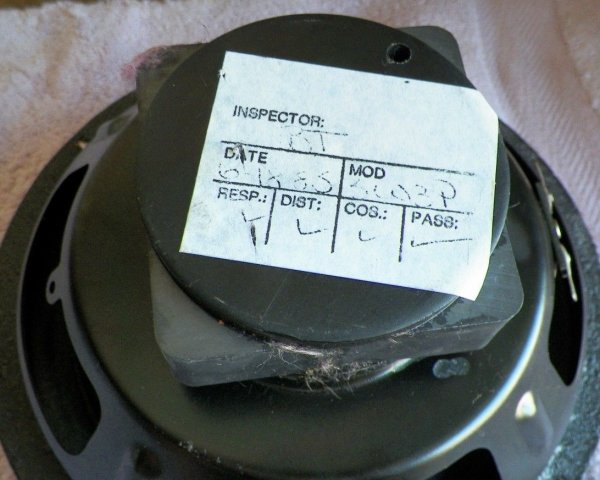The long-awaited HUMAN 81 DK is now available.
Best viewed in "landscape" mode.
Square Magnet Structures
Draft
Over the years I have noticed occasional squeamishness from people replacing vintage parts with new ones I have made when they notice that the new ones have round magnets, unlike their old parts' square ones.
Many vintage speakers were made with square magnet structures. This was merely a manufacturing convenience and had no meaningful effect on the sound they produced.
It was far easier, from a cost investment perspective, to make square "front plates" and "back plates" for the magnet structure than round ones, since they could simply be cut from large sheets or strips with a heavy shear. Round plates would have required paying for massive stamping dies for each driver.
The magnets themselves could be made in any shape with no advantage either way. There is a even a good chance that there were a range of stock sizes of square ceramic magnets with round holes in them being made for some earlier purpose, but I haven't been able to document this.
The end result of the magnetic structure is to create a strong radially-oriented field in the "gap", the ring-shaped space between the round hole in the front plate and the round "pole piece" (the pole piece acts as a field guide to bring the lines of magnetic force efficiently from the rear of the magnet to the front). The windings on the round "voice coil" thus intersect this field at ninety degrees, so when current passes through them, the result is motion in the third direction perpendicular to the field and the windings - in and out. The voice coil is glued to the apex of the cone, which then transmits this motion to the air.
Nowhere in this structure does the peripheral shape of the magnet structure make any difference, as long as an appropriate magnetic field is guided and focused into the gap. If anything, a square structure might be slightly wasteful. Round is obviously ideal, if there is any wasted field strength.
When building a modern replacement for a vintage driver, it makes complete sense to do everything possible to make it better, as long as what matters to its sound quality is preserved. Modern adhesives are stronger and cleaner to use. Modern materials (such as aluminum or kapton) for things like the voice coil "former" can withstand more heat, raising power handling versus vintage materials. Building a round magnet structure makes sense because all the modern tooling is set up for the parts and round magnets are readily available.
In short, the product of the magnet structure is a ring-shaped radial magnetic field in a round gap. There is nothing about a square magnet structure that can do this any better than a round one.
Here's an amusing anecdote. Back when I worked at Genesis, we were in the process of changing from square motors to round ones, which basically meant going to three new parts - round back plate/pole pieces, round front plates, and of course round magnets. We didn't want to throw out any parts, and we sourced parts from several different suppliers. So a lot of early round magnets went into woofers with square front and/or back plates during the transition. Then, we scored a really good deal on a few pallets of square magnets, and a few thousand woofers ended up with round front and back plates and square magnets. They all worked the same, of course.

Back in the days of alnico (iron alloyed principally with aluminum, nickel, and cobalt) magnets, while the magnet itself was usually round (and served as the pole piece in most designs), the "cage", or field guide, which focused the rear pole of the magnetic field back around to the front (forming the front plate) was usually squarish - again, to due to ease of manufacture and the fact that the field doesn't care.
(more images)
* * *
Top - Contact
New Speakers -
EPI and Epicure - Genesis Physics
© Copyright - All Rights Reserved
![]()
7 Kelsey Road, Lee, New Hampshire 03861
Prices can change and specifications will improve without notice
